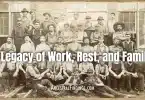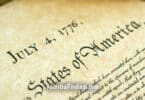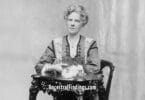Presidents’ Day is in February, and most Americans probably know very little about what this federal holiday is and why we celebrate it. It is a day off school for most institutions, and government offices, the mail, and usually banks are also closed on Presidents’ Day. You will probably also see plenty of ads on television from stores proclaiming President’s Day sales. It is a big shopping day, because of all the people who get the day off work. However, Presidents’ Day is more than just a day off and a reason to shop at a discount. Here is the real story behind Presidents’ Day in the United States.
Presidents’ Day wasn’t originally known by this name. In its initial form, it was known as Washington’s Birthday and was a day set aside to celebrate our first U.S. president. George Washington was born on February 22, 1732. The official celebration of his birthday by the nation fell anywhere between the 15th and 21st of February each year, depending on when weekends were and other important events on the federal calendar.
The original federal holiday honoring George Washington was devised by an act of Congress in 1879. It was originally meant to be observed only by federal offices in Washington, D.C., but was expanded to include all federal offices in the country in 1885. It was the first holiday to honor an American president and was initially always celebrated on Washington’s actual birthday on February 22. This changed on January 1, 1971, with the Uniform Monday Holiday Act, which shifted the celebration to fall between the dates it does today. Officially, the holiday now always falls on the third Monday in February.
The individual states began wanting to celebrate the birthdays of individual presidents, and some states initiated holidays for Lincoln’s birthday, Jefferson’s birthday, and for the office of the president in general. To gather all of these individual celebrations into one national holiday, a committee was formed in 1951 to look into it. It was called the Presidents’ Day National Committee. Congress was amenable to celebrating the birthdays of Washington and Lincoln, as well as the office of the president itself, but thought three holidays so close together, which would have included Inauguration Day (which was in March at the time) was too burdensome for the federal calendar, so the idea of a federal Presidents’ Day was dismissed.
This means that the holiday we celebrate on the third Monday in February is still officially called Washington’s Birthday. However, in the mid-1980s, advertisers began referring to the holiday as President’s Day nationwide, and the name was unofficially adopted by the public. It even appears that way on most U.S. calendars.
While the federal government only officially celebrates Washington’s Birthday, though most of the nation calls it Presidents’ Day, most individual states also have their own presidential celebrations, usually for Lincoln, but sometimes for Jefferson, and even others. The vast majority of these states have incorporated these celebrations into the overall umbrella of Presidents’ Day, so they can piggyback off the federal holiday, and not have to have several separate state holidays near the federal one. California, Connecticut, Missouri, and Illinois are currently the only states to have an official, separate state holiday for Lincoln’s birthday, though many states name other presidents besides Washington in their official Presidents’ Day celebration, which falls on the same day as the federal holiday.
Until the 1980s, most businesses stayed closed to observe Presidents’ Day/Washington’s Birthday. However, as more corporate businesses realized this was an excellent day to get extra revenue by having sales, they began staying open, and the holiday became an increasingly commercial one. It is akin to Memorial Day and Valentine’s Day, where people expect big sales at most stores, and do much extra spending. Unlike Valentine’s Day, though, most people do not exchange Presidents’ Day cards.
This is actually in keeping with the idea of the Uniform Monday Holiday Act of 1971. Congress wanted to move all federal holidays to Mondays to promote business and commerce.
Also, some schools used to close for just one day to celebrate Presidents’ Day/Washington’s Birthday, and some still do. However, rather than having a single holiday in February and then a week off in March for spring break, many schools are now either foregoing the day off for Presidents’ Day or moving spring break back to February and incorporating Presidents’ Day into the spring break week holiday from school. It varies from state to state, and even from individual school district to district.
Because the defunct Purple Heart military award was revived on Washington’s 200th birthday in 1932, it is sometimes used as a holiday for the awarding of this prestigious medal, either at the federal level or on individual military posts.
While most areas of the nation do not have any official community celebrations for Presidents’ Day/Washington’s Birthday, his hometown in Alexandria, Virginia lives it up, with month-long celebrations of George, including the world’s longest, most elaborate George Washington parade. Washington’s home at Mount Vernon hosts holiday festivities for the whole weekend of his birthday, and this is also done at Washington’s Birthplace National Monument in Westmoreland County, Virginia. A few other, isolated places in the nation have their own, unique celebrations, such as Denver, Colorado, and Eustis, Florida.
While it has traditionally been spelled Presidents’ Day in the past, because the apostrophe was supposed to indicate a celebration of one president (Washington), many states and businesses are now referring to it as Presidents’ Day, without the apostrophe, indicating a celebration of more than one (or all) president. In fact, the Associated Press Stylebook now prefers the use of Presidents’ Day.
A tradition has existed since 1862 to read Washington’s farewell address to the nation in Congress and out loud in some communities that celebrate the holiday on this day. It was begun because of the Civil War, and the idea was that Washington’s words could help bring the country back together.






